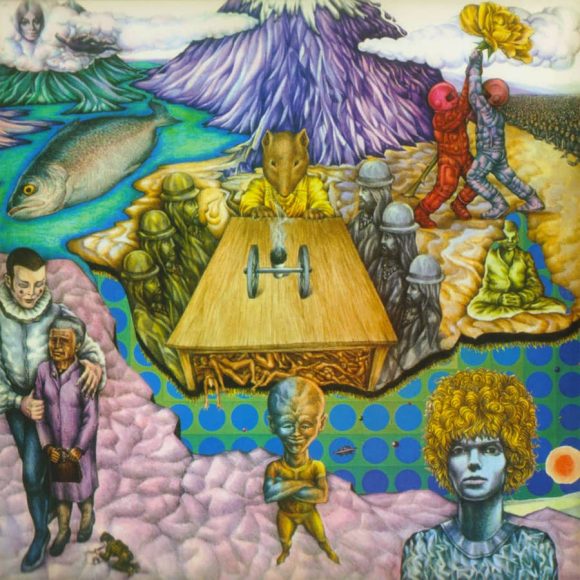Lyrics and title
Contents
The successive lines are just as dense and cryptic, and take in a young god, a hysterical blackbird, and a passing reference to the then-fashionable Lebanese-American writer, artist and philosopher Kahlil Gibran.
I used to have periods, weeks on end, when I just couldn’t cope any more. I’d slump into myself… I felt so depressed, and I really felt so aimless, and this torrential feeling of ‘what’s it all for anyway?’A lot of it [the album] went through that period, ‘Width Of A Circle’ was definitely that – I went to the depths of myself in that. I tried to analogise the period of my life from when I left school to that time – to the making of that LP. Just for my own benefit, not really for any listener’s benefit. I very much doubt whether anyone could decipher that song correctly on my level. But a lot of people have deciphered it on their own levels. That’s fine – that’s what a song does.
Phonograph Record, January 1972
The third verse and beyond move from mysticism to the pleasures of the flesh, with an encounter in a bordello – leather, drag, puckered lips, followed by a homoerotic dalliance with God. Sexual pleasure is suffused with hellish imagery recalling the Divine Comedy: a burning pit of fear, snakelike metamorphosis, and a repeated warning to “turn around, go back” – a reiteration of Dante’s famous instruction to “Abandon all hope, ye who enter here.”
Dante may have additionally figured in the song’s title. The Italian poet’s seventh circle of hell was divided into three rings: the outer ring populated by murderers and violent criminals; the middle ring contained those whose lives ended by suicide; and the innermost, most apocalyptic third ring was filled with blasphemers, usurers, and sodomites, onto whom burning rain descended.
‘The Width Of A Circle’ was one of Bowie’s first songs to explicitly allude to gay sex, and saw him “horned and tailed”, “tongue swollen with devil’s love”, insatiably gasping “Do it again, do it again”. It is left up to the listener whether the titular circle refers to Dante’s creation, or Bowie’s leather belt, the gaping underground cavern, or even the hole between his “cheeks aflame”.
Bowie had been toying with the title for some months. The back cover of his second self-titled album (sometimes known as Space Oddity) featured a pen and ink drawing by his friend George Underwood, based on a concept drawing by Bowie. Underwood’s illustration for Bowie was titled ‘The Depth of the Circle’ on the record sleeve.
This was in error, and should have been Bowie’s preferred title, ‘The Width Of A Circle’. Undeterred, the correct title was used on Bowie’s next album for one of his first epic songs.

The theme of madness ran through several of the songs on The Man Who Sold The World. In 1966 Bowie and his troubled half-brother Terry Burns left a Cream concert early, when Terry fell to the pavement. His 1993 recollection of the incident almost mirror the lines in ‘The Width Of A Circle’: “He struck the ground a cavern appeared/And I smelt the burning pit of fear”.
We got out into the street and he collapsed on the ground and he said the ground was opening up and there was fire and stuff pouring out the pavement, and I could almost see it for him, because he was explaining it so articulately.
NME, 20 March 1993
